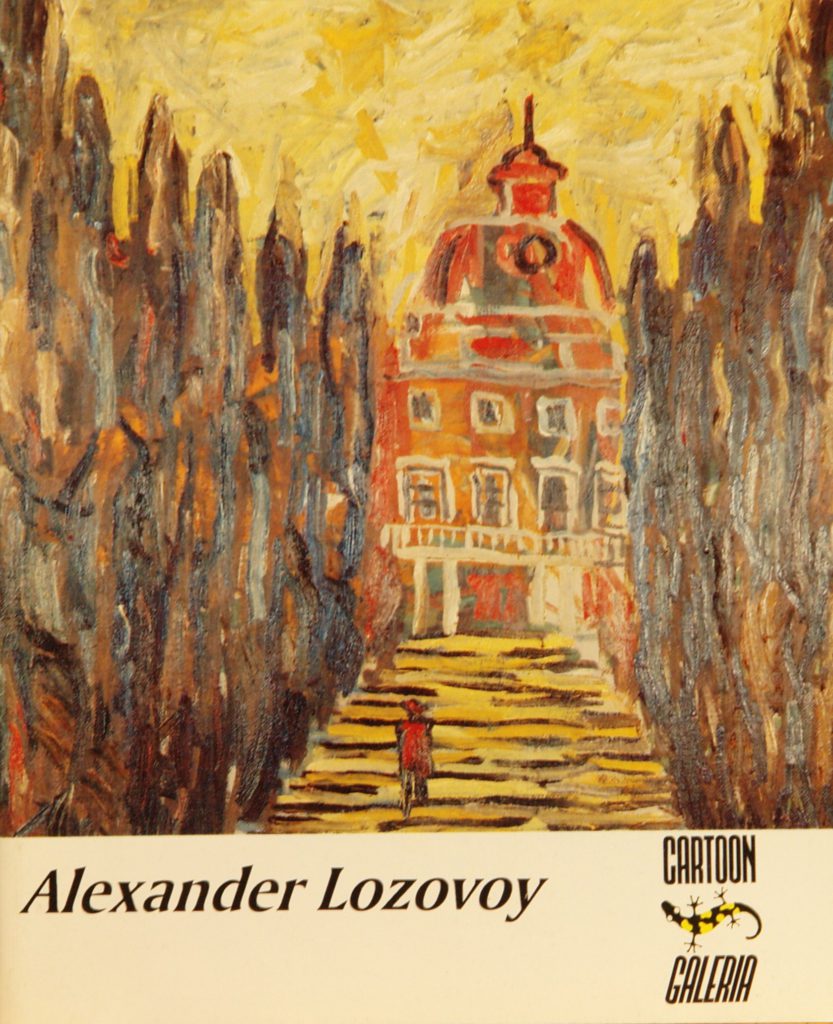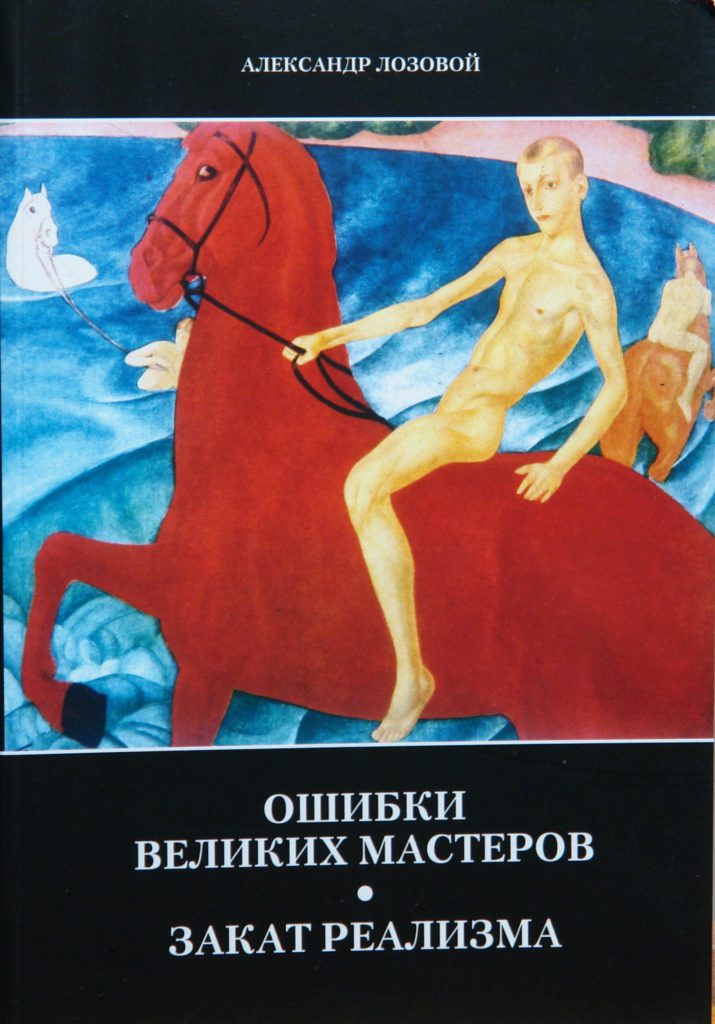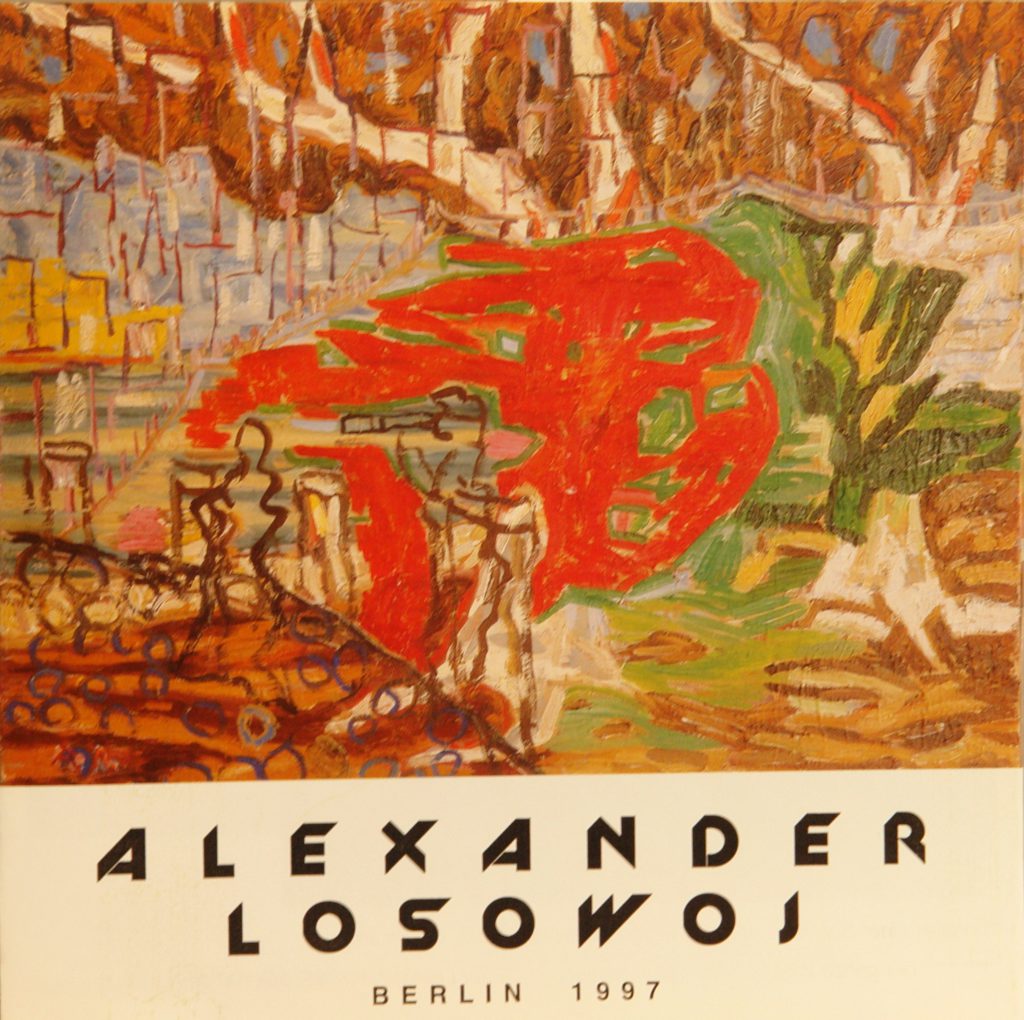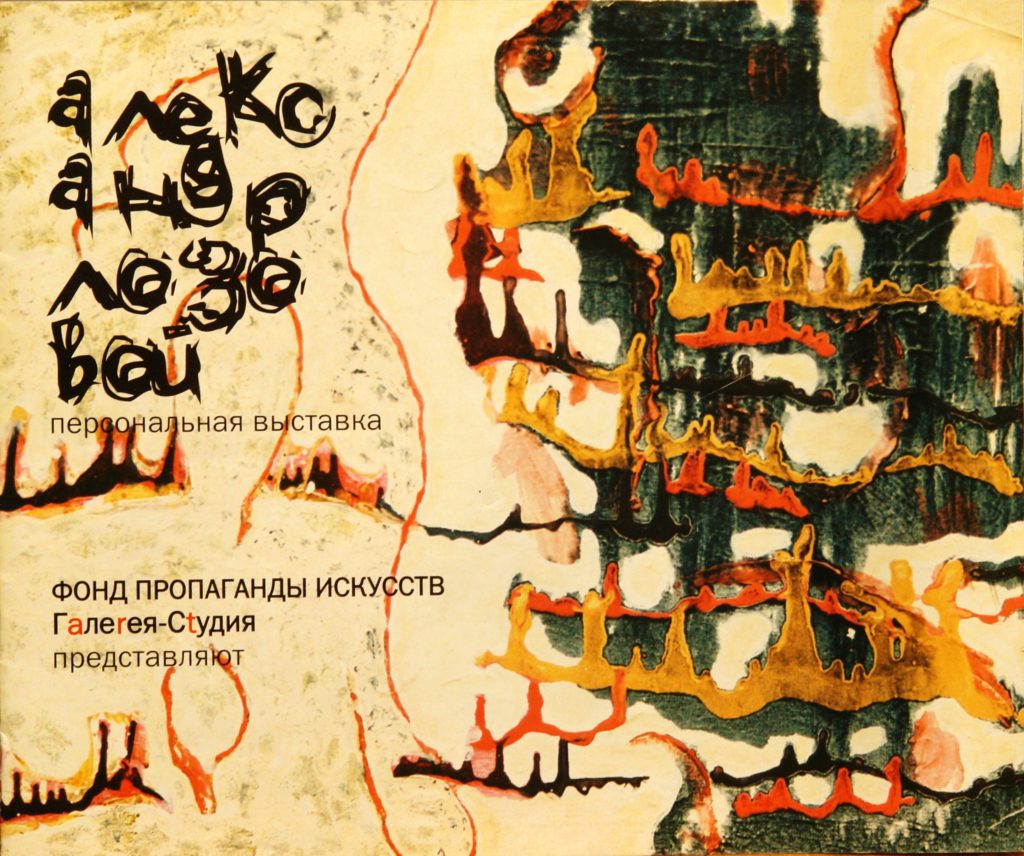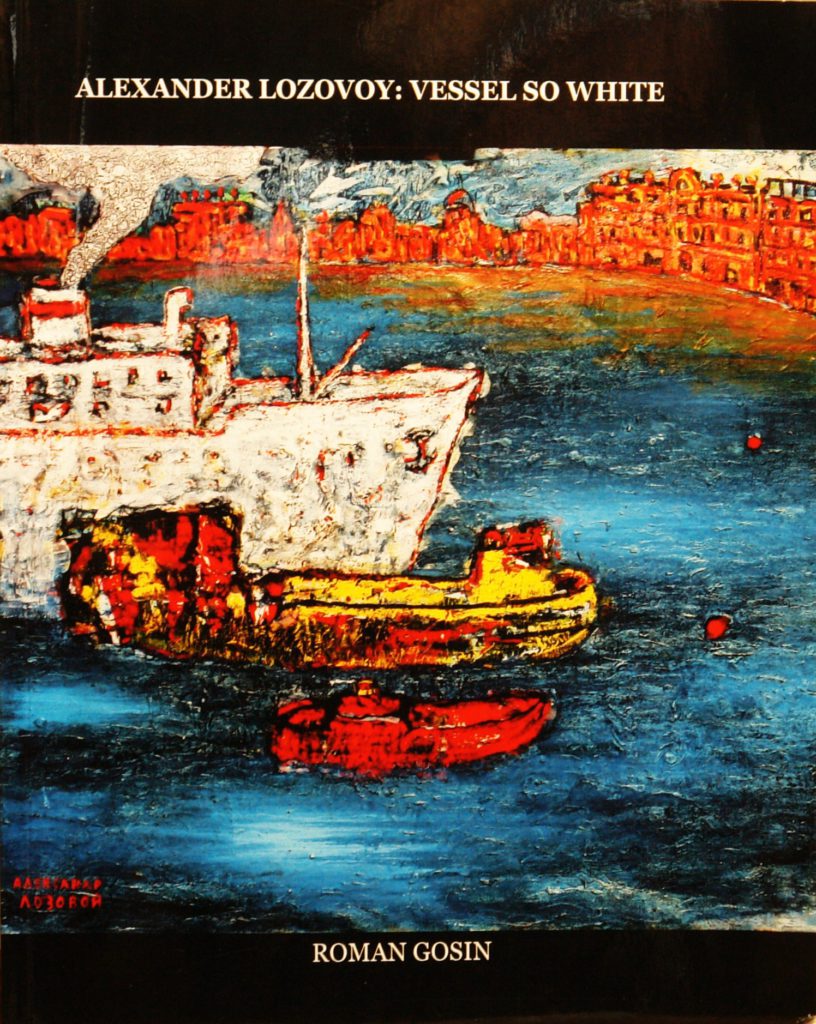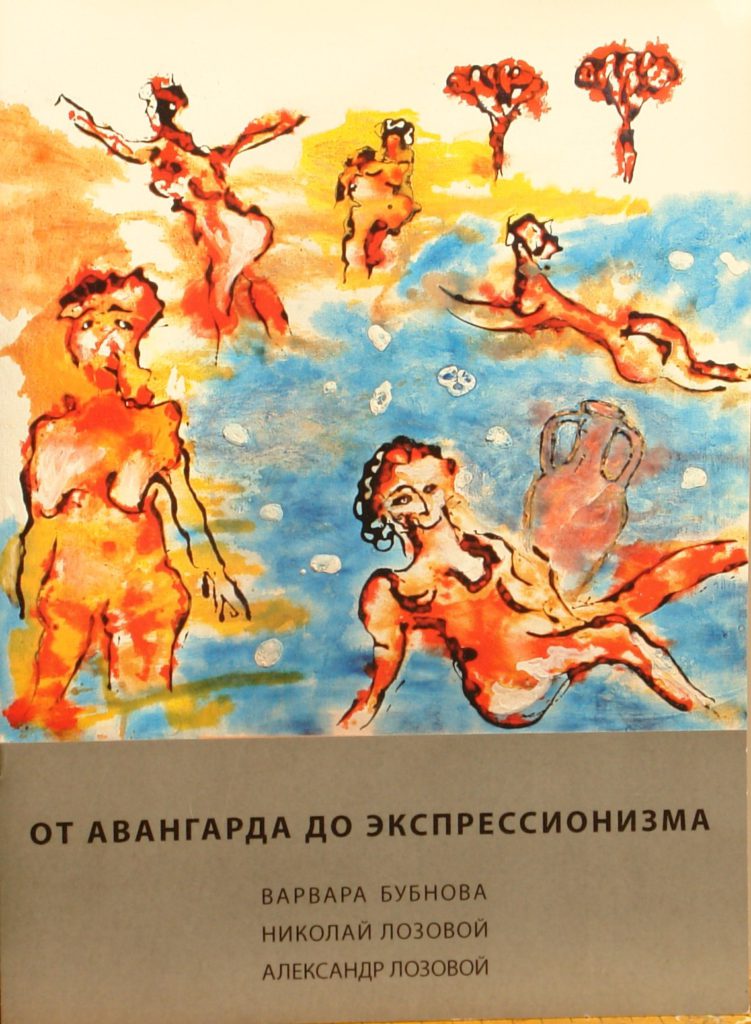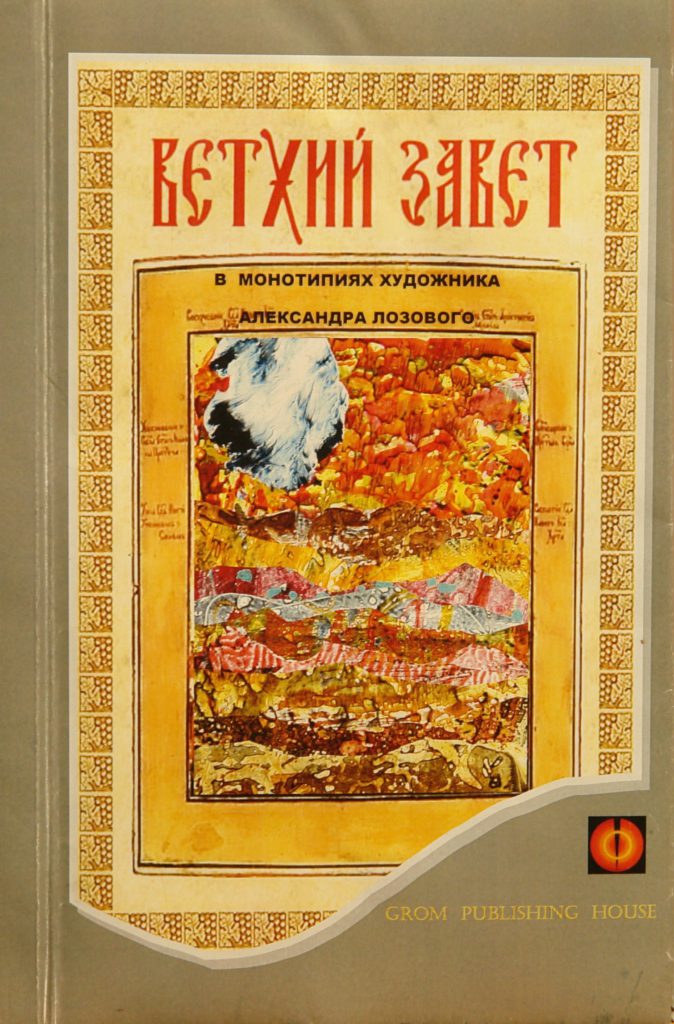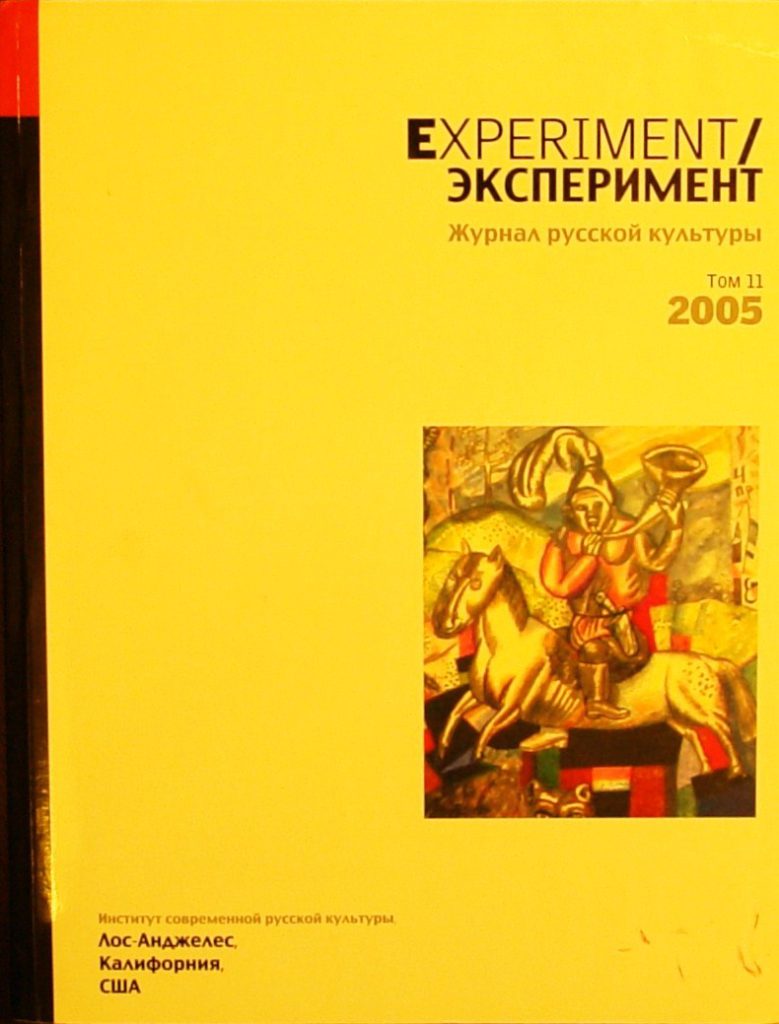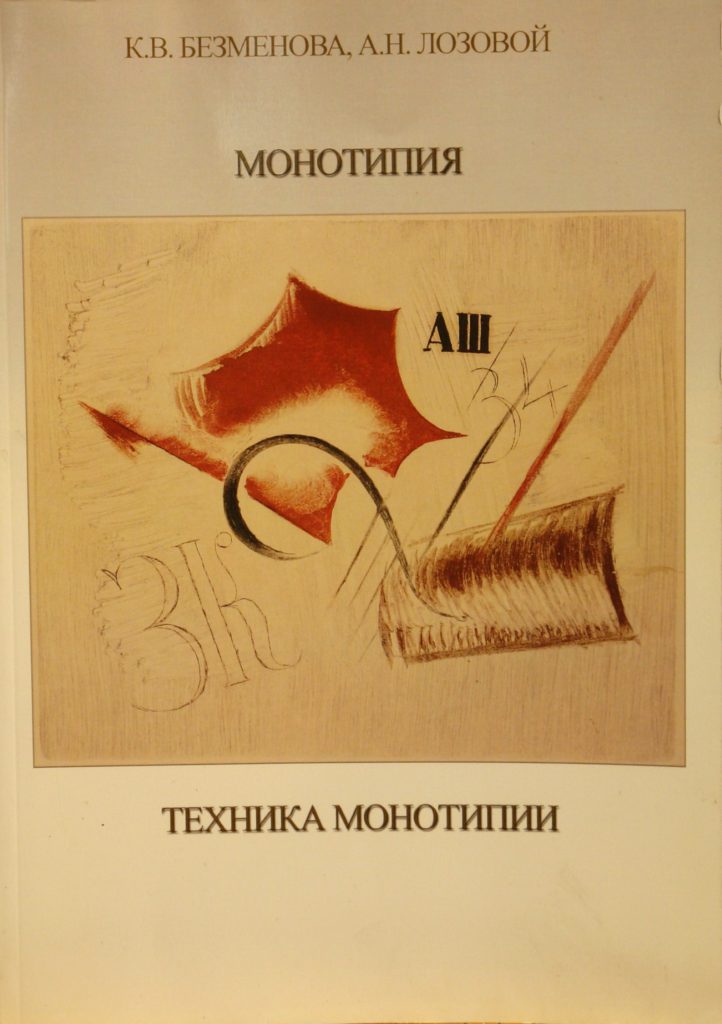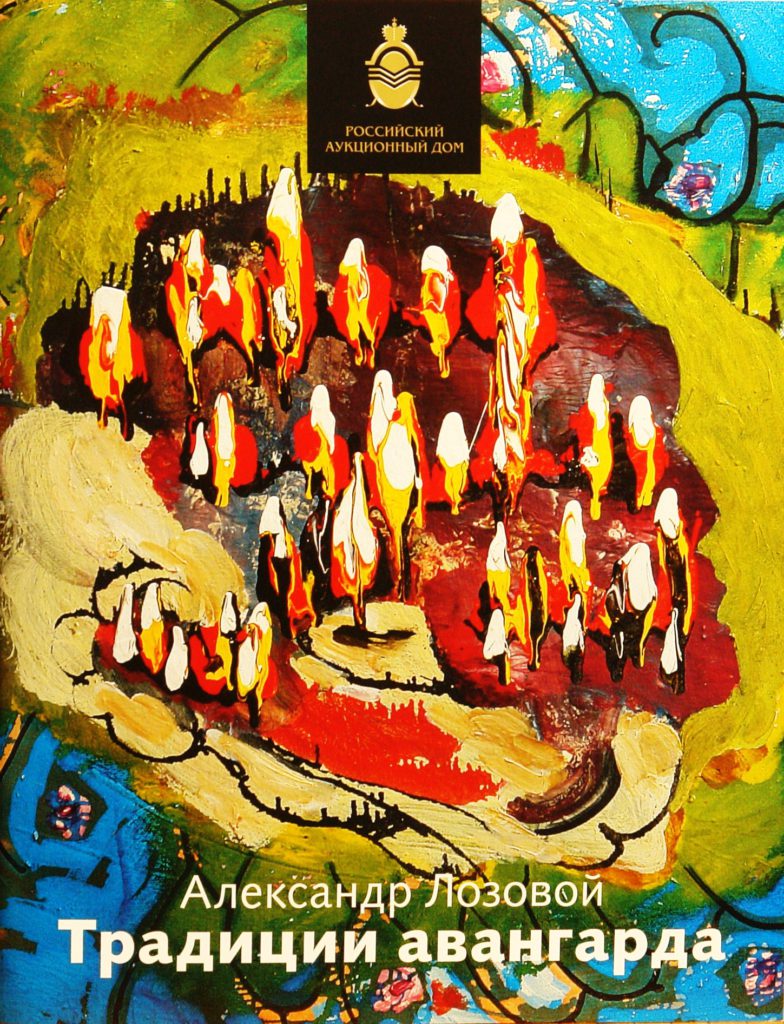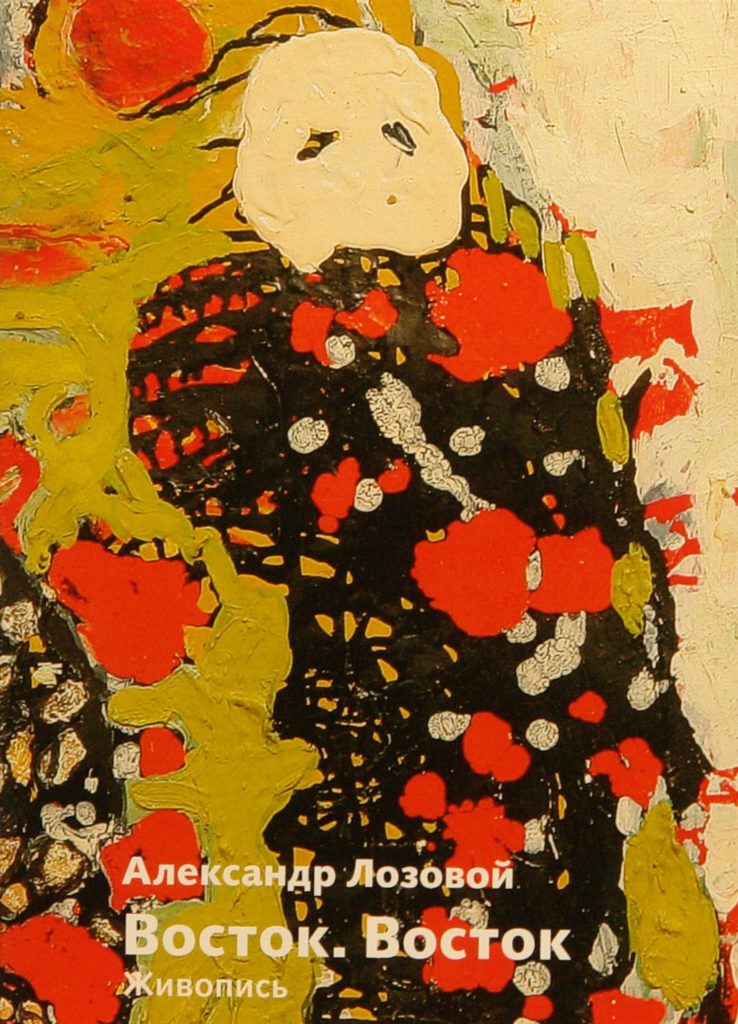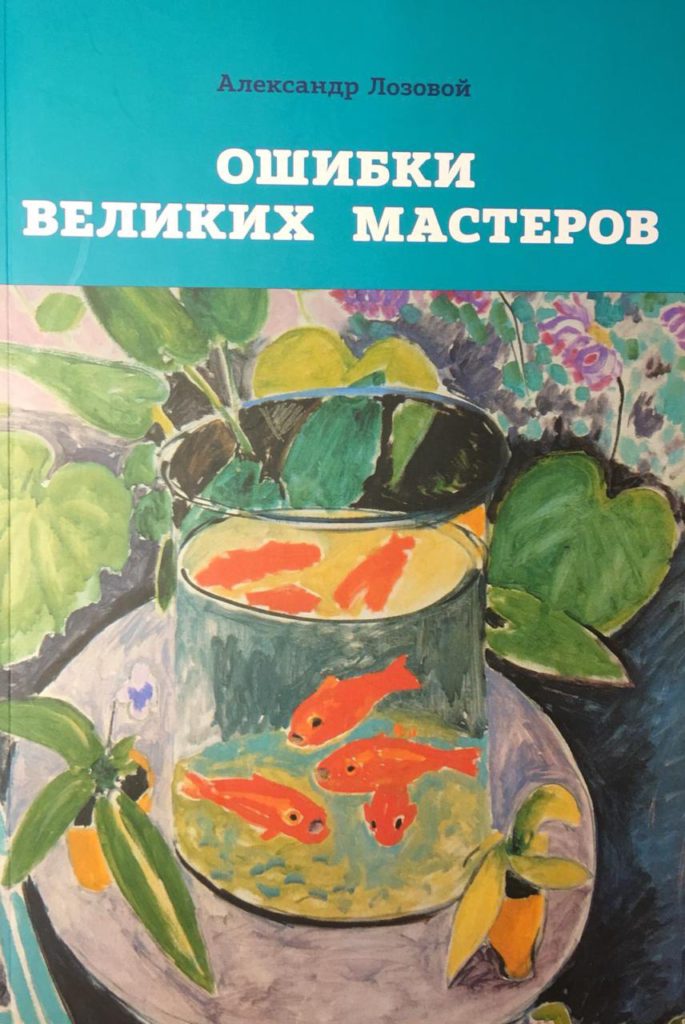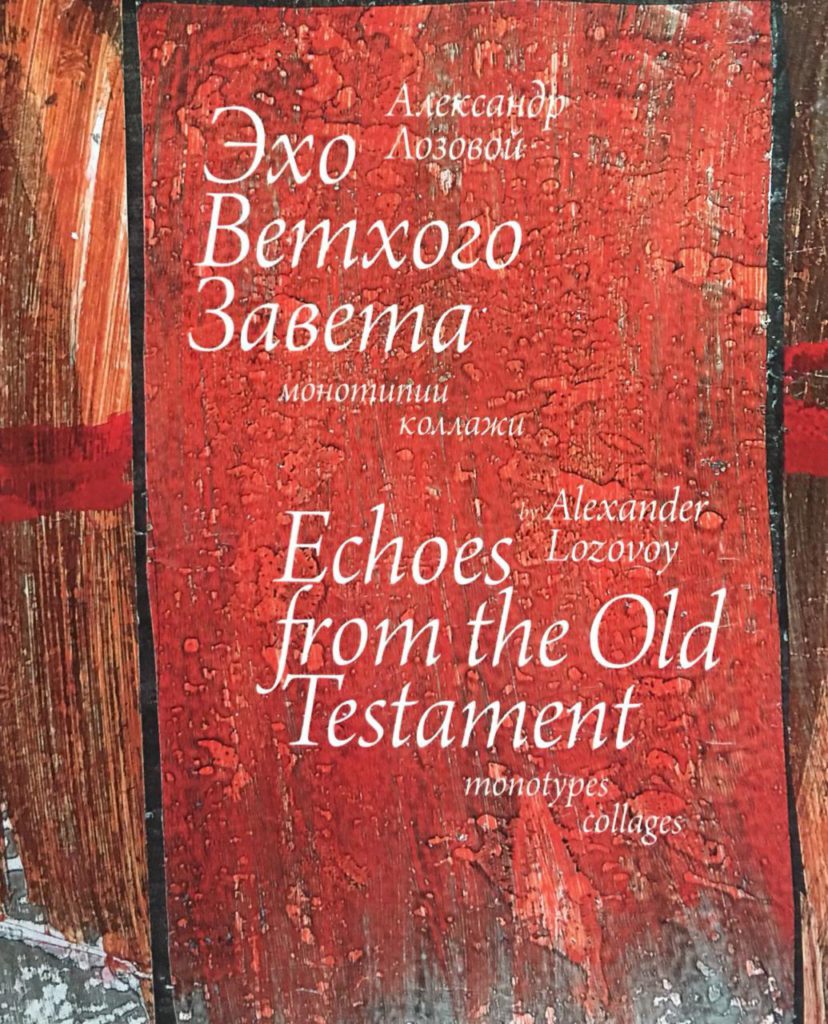Publications

MONOGRAPHY by Alexander Lozovoy about Barbara Bubnova. 1984 year 
EXHIBITION CATALOG Alexander Lozovoy in Barcelona. 1995 year 
MONOGRAPHY by Alexander Lozovoy. 2008 year 
VARVARA BUBNOVA. Alexander Lozovoy is one of the compilers of the catalog. 1989 year 
BOOKLET EXHIBITIONS in Asti, Italy. 1999 year 
EXHIBITION BOOKLET in the Russian House of Science and Culture, Berlin. 1997 year 
BOOKLET EXHIBITIONS in Moscow. 2003 year 
EXHIBITION CATALOG at the Moscow Museum of Modern Art. 2005 year 
ARTICLE Alexander Lozovoy. Algebra and harmony of Voldemar Matvey in the collection. 2005 year 
FOREWORD by Alexander Lozovy for the 1914 reprint. 2002 year 
MONOGRAPHY about Alexander Lozov. Written by Roman Gosin, San Francisco. 2010 year 
CATALOG exhibition in the Heritage gallery. year 2009 
ILLUSTRATIONS by Alexander Lozovoy to the episodes of the Old Testament. 2011 
ARTICLE Alexander Lozovoy – What Filonov was silent about in the magazine Experiment, Los Angeles. 2005 year 
ARTICLE Lozova about Varvara Bubnova in the collection – Sisters of Bubnov and Japan, Sapporo. 1999 year 
TEXTBOOK on monotype together with K. Bezmenova. 2011 
MALEVICH. Alexander Lozovoy is one of the compilers of the two-volume. 2004 year 
EXHIBITION CATALOG in the Russian auction house, Moscow. year 2012 
SERIES OF JAPANESE POSTCARDS by Alexander Lozovoy 
Monotype Technique 
The mistakes of the great masters 
Echo of the Old Testament
| John E. Bowlt, Professor, Los-Angeles |
| Alexander Lozovoi: High Voltage |
| For Alexander Lozovoi the warmth, force and gamut of color are essential to the act of painting. For him red, yellow, orange are not mere instruments of identity or narration, but are electric currents that galvanize the psyche and shock the eye. Captured within this magnetic field, we cannot remain untouched or static: here is a shock therapy that arouses us from the torpor of visual indifference, commanding us to celebrate the spectrum of the firmament, the variegation of the landscape and the luminescence of the ocean. Like individual waves in a constant oscillation, Alexander Lozovoi’s paintings, whether figurative or abstract, move us from passive contemplation to dynamic interaction. With their explosions of color, they detonate the batteries of convention, transcend boundaries and remind us that the authentic artifact is volatile, electrifying and extremely hazardous. |
| John E. Bowlt, Professor, University of Southern California, Los Angeles |
| Professor of the University of Southern California |
| About collages of Alexander Lozovoi |
| The monotype collages of Alexander Lozovoi are experiments in syncopation, for the essential message of these abstract or abstracted compositions is about rhythm, interrupted meter and the formal enjambement. Like jazz improvisations, Lozovoi’s collages function as melodic measures sweeping across plane and surface. Metaphors for the shifting sands beyond the conditioned regimens of our time and space, they advance without preordained beginning and end. Lozovoi’s collages seem to capture and reproduce a seismic energy, reminding us that the essence of reality is but a single force-line and conduit of energy which manifests itself in all the shapes, forms and colours of our environment. In this respect, Lozovoi seems to be sharing the worldview of other Russian artists, not least, Pavel Filonov, Vasilii Kandinsky and Mikhail Matiushin, who also regarded their world as a single, gigantic organism, throbbing and pulsating in a constant metamorphosis.Such is the immediate effect of Lozovoi’s collages. But, formally, speaking, the collage is, by its very nature, a miniature construction. It is an assemblage of superimposed strata which signal an advance from intimate surface to public space, and these highly finished, layered monotypes follow the same course, arising, ascending, distending. Lozovoi emphasizes this impression by using the sinuous, undulating line as a connector between both the interior surfaces within a given collage and the individual surfaces of the individual artifacts. Like the billowing wave of the ocean or the cumulous cloud in the sky, the collages become part of a single, unending rhythmic whole. Lozovoi highlights this trajectory by exploring and applying the medium of the monotype: the mechanical intervention, as it were, controls and guides the artist’s prodigal hand, confines the wayward brushstroke and contains the arbitrary flow of paint. In other words, the monotype removes the superfluous and the capricious and smoothes the surface of things—a purification and streamlining which expand the energy and increase the velocity of these fast and upbeat syncopations. Lozovoi’s engagement with the pictorial series, suite and cycle and hence with the notion of interaction and continuum also enhances the effect of fluidity and refractivity in these collages. Like the ice-skater or the bip-bop saxophonist, each uncertain of a final destination, Lozovoi proceeds with > masterful technique and uninhibited imagination, reminding his audience > that an authentic work of art is one that may disturb the eye and interrupt the intellect, but will never cease its forward motion. |
| John E. Bowlt, Professor, University of Soutern California, Los Angeles |
| Kaleidosope |
| The essence of Alexander Lozovoi’s art is movement, for, above all, it is the kinetic principle which informs his paintings, monotypes and collages, whether figurative or non-figurative. In his kaleidoscope of colors, forms and textures, people leap and run, shapes collide and surfaces intersect, establishing an energy and vigor which strike and sear the senses. However, Lozovoi’s compositions are not simply formulaic exercises in painted choreography; rather, for their visual effect they rely not necessarily upon narrative covention or technical discipline, but upon intuition and spontaneity, producing the impression of rhythm rather than of meter, of vers libre rather than of dactylic scheme. Indeed, there are moments when Lozovoi’s compositions not only seem to be dancong of their own accord, but are also summoning us to dance, voicing, as it were, an urgent need to be danced. One of Lozovoi’s most arresting collages is called Dance of Fire and perhaps, to some extent, each of his pictures is an extension of that concept. What kind of balletic arabesques does Lozovoi compose and why? Perhaps his gamut of colors and vertiginous forms is simply a visceral response to the dynamic and apparent confusion of everyday life? Perhaps, recalling his sojourns in Sukhimi, he is eliciting the refractive light and exotic spectrum of the south? In any case, if, as the Symbolists affirmed a century ago, the essence of reality is movement and its esthetic metaphor music, then Lozovoi’s paintings and drawings can be accepted as resonant metaphors, fluent, mellifluous and vibrating. More than that, Lozovoi’s art may be regarded as an improvisation, both in the traditional understanding of a musical passage without formal beginning and end and as a generator of the “inner sound” as Vasilii Kandinsky explained in his tract On the Spiritual in Art of 1912 – a sound which breaks through the material barrier of paint, pencil, canvas and paper to transport us towards the conditions of invisibility and silence. Furthermore, just as Kandinsky used the graphic art of blanc et noir as an experimental laboratory for elaborating and formulating basic combinations and resolutions in form, so Lozovoi investigates the monotype, finished and essential, to propose esthetic ideas which he might then develop and define. Many of the monotypes and collages operate with strands, stripes or bands of color, thereby assuming the appearance of colored music scores. Kandinsky’s ideas connect closely to Lozovoi’s art, but the precedents to the experiments in collage and monotype are many. Georges Braque, Kazimir Malevich, Pablo Picasso, and Kurt Schwitters all incorporated collage into their paintings and reliefs, while Varvara Bubnova and Elizaveta Kruglikova invested much time and effort in exploring the textures of the monotype. At the same time, for Lozovoi the painting, the monotype and the collage are not to be regarded as mere examples of “applied art” such as a carpet, a mosaic or a tapestry, because for Lozovoi the work of art contains a further dimension, value and purpose. After all, the ultimate destination of Lozovoi’s art does not lie along the trajectory of decoration, because its justification is a deeply philosophical one. Ostensibly, Lozovoi’s art celebrates the variegation and vitality of our world and yet the collages, in particular, remind us that the only order in that world is disorder or, rather, the absence of conventional orders, as in the case of the desert or the limbo of twilight (two of Lozovoi’s favorite subjects). This is to say that the perimeters, categories and rubrics which divide our world into malleable and practical spheres of influence have been imposed by our mendacious instruments of perception and through our conditional language – which, surely, have nothing in common with the divine order of things: by its very nature, the ulterior or essential shape of reality must be vastly different from what we imagine, conceive and project. Lozovoi undermines and destroys the false structure to remind us of the higher sphere by carrying us back to a genesis of tangled forms where human direction, orientation and perspective are irrelevant. That is why, incidentally, Lozovoi’s collages, like a kaleidoscope, can be observed and appreciated from any point of view, demonstrating that the only constant is the inconstancy of the perpetuum mobile. |





